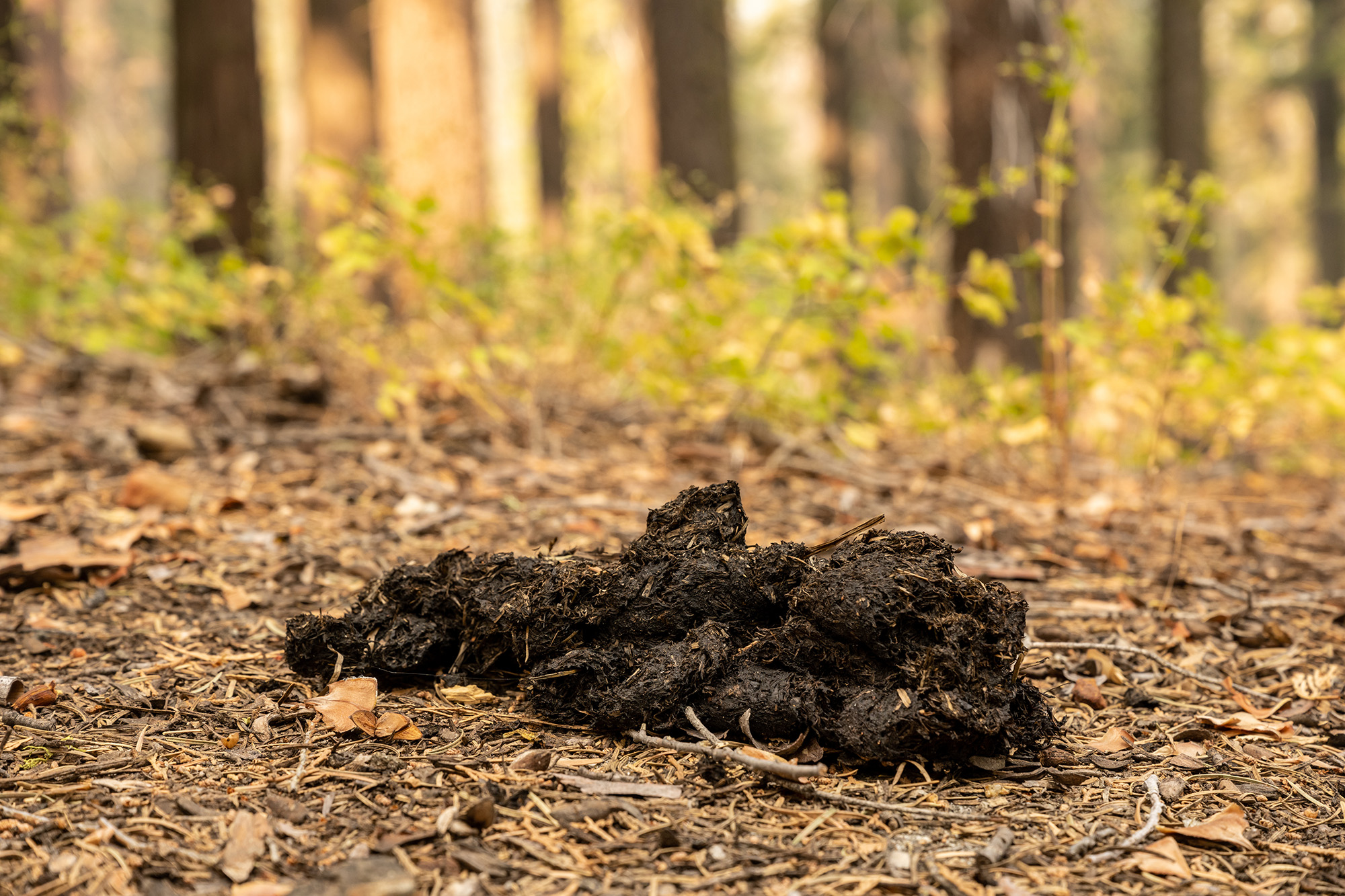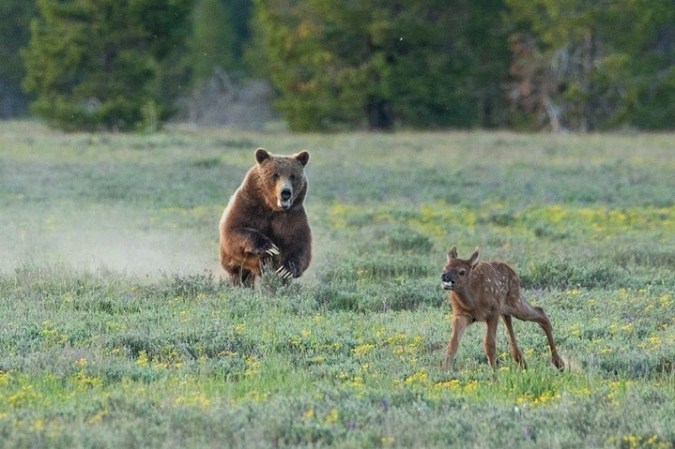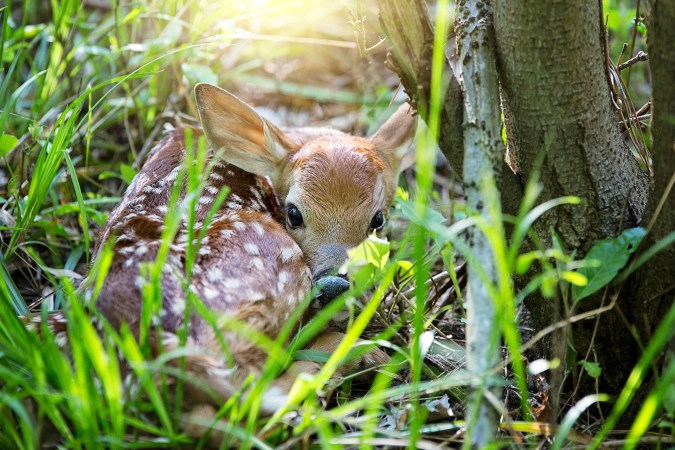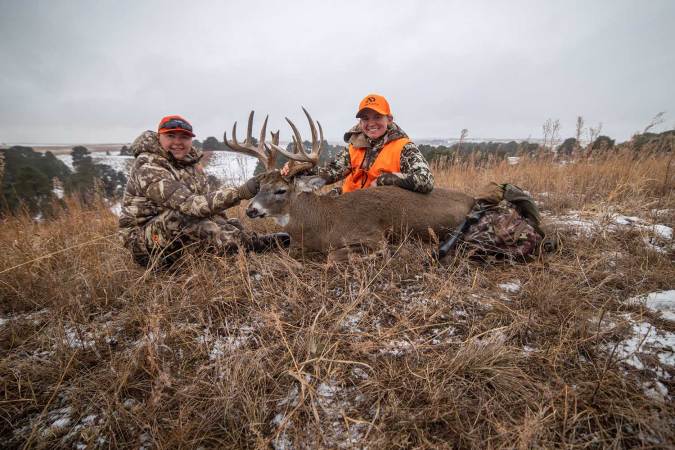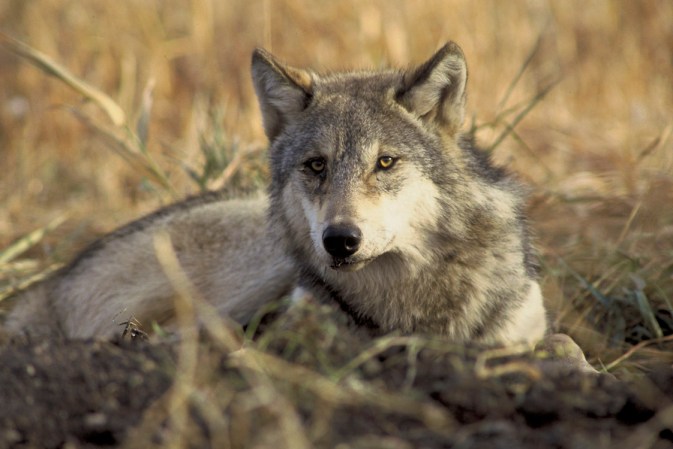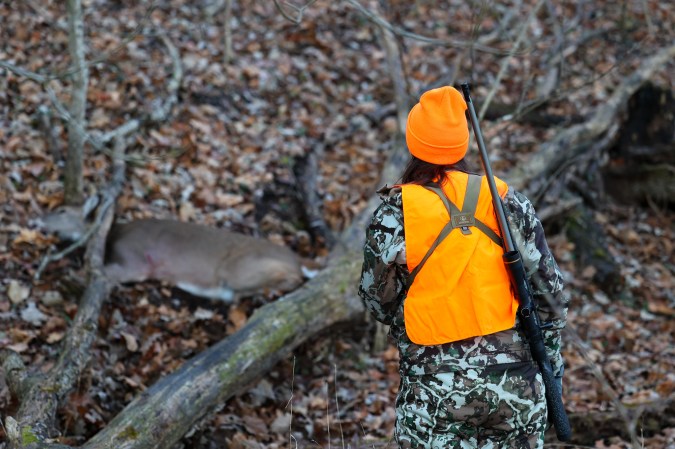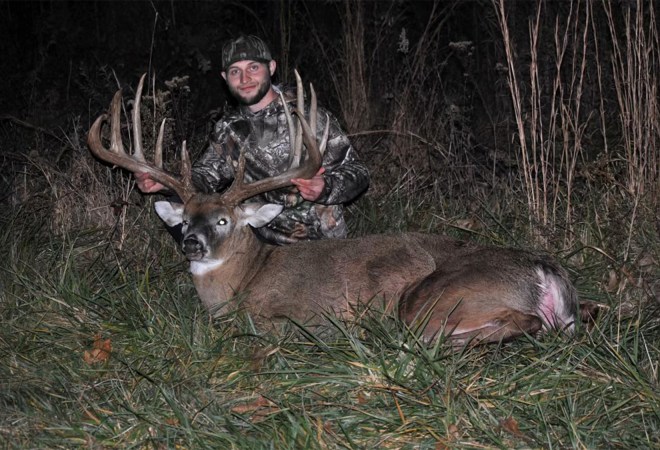We speed-hiked through the woods, determined to make it to the high-mountain lake before lunchtime. On that spring morning in Montana’s Swan Valley, nothing sounded better than an afternoon of fishing and eating sandwiches beside the water. As we rounded the corner of a hairpin turn, we noticed a giant pile of green scat steamed on the edge of the worn path. The pile was so big and uncharacteristic of other animals, we immediately thought of grizzlies. But bear scat identification isn’t always easy.
“Shit,” Austin said.
“No kidding,” I retorted.
We gripped our bear spray, uncertain if it belonged to a griz or a black bear. Austin took the realistic approach and reminded me that we were doing everything right—making noise, staying alert, keeping bear spray at the ready. We made it another hundred yards before seeing the big bear tracks interspersed with matching little tracks—cubs. When we heard the rustling ahead on the trail, we decided to turn around and not tempt fate. The fishing would have to wait for another day.
Still, there’s lots of good hunting and fishing in bear country, and any outdoorsperson worth their salt can learn to identify bear droppings. These bear scat identification tips will teach you to identify bear scat so you can better understand a bear’s pattern, diet, and more.
What Does Bear Scat Look Like?
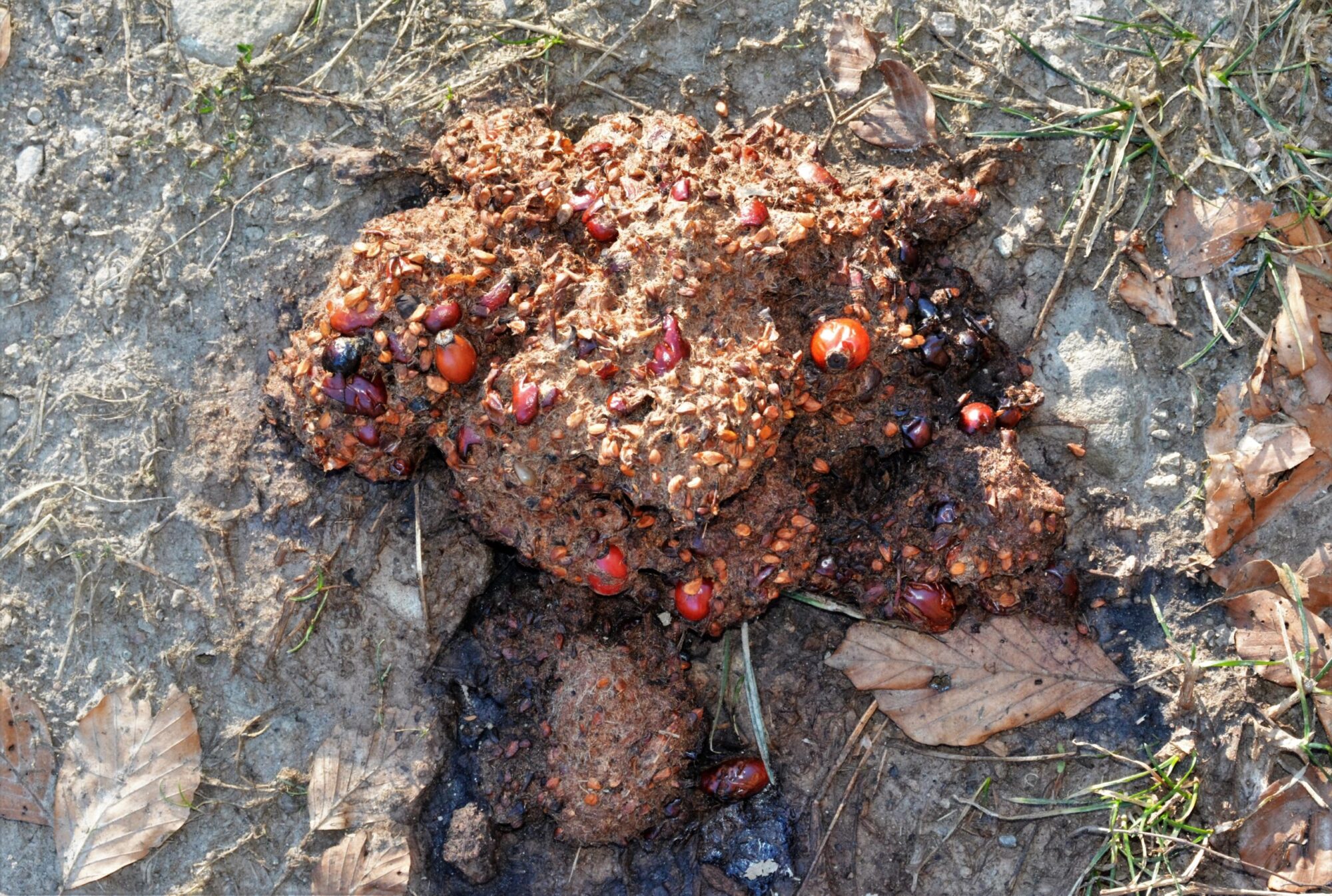
Typical bear scat is best described as a big, messy pile. Rather than the uniform pellets from deer and elk, or the small mesocarnivore scats of foxes and coyotes that are mostly hair, bear scats are defined by their size, contents, and asymmetry.
The tricky nature of identifying bear scat comes from the spectrum of foods they eat, says Montana Fish, Wildlife and Parks bear biologist Jamie Jonkel. Bear scats vary widely based on what food sources the omnivore is digesting. Different types of bear scats include:
- Vegetation scats
- Berry scats
- Insect scats
- Meat scats
- Fish scats
- Garbage scats
Vegetation Scats
Both black bears and grizzly bears eat more vegetation than you might think, especially when they’re waiting for berries to pop in the spring. Such a green-heavy diet can make for a particularly green scat.
“When it’s fresh, it’s almost olive-green, maybe a little darker than an olive that would have a pimento in it,” Jonkel says. “That’s the one that most people see.”
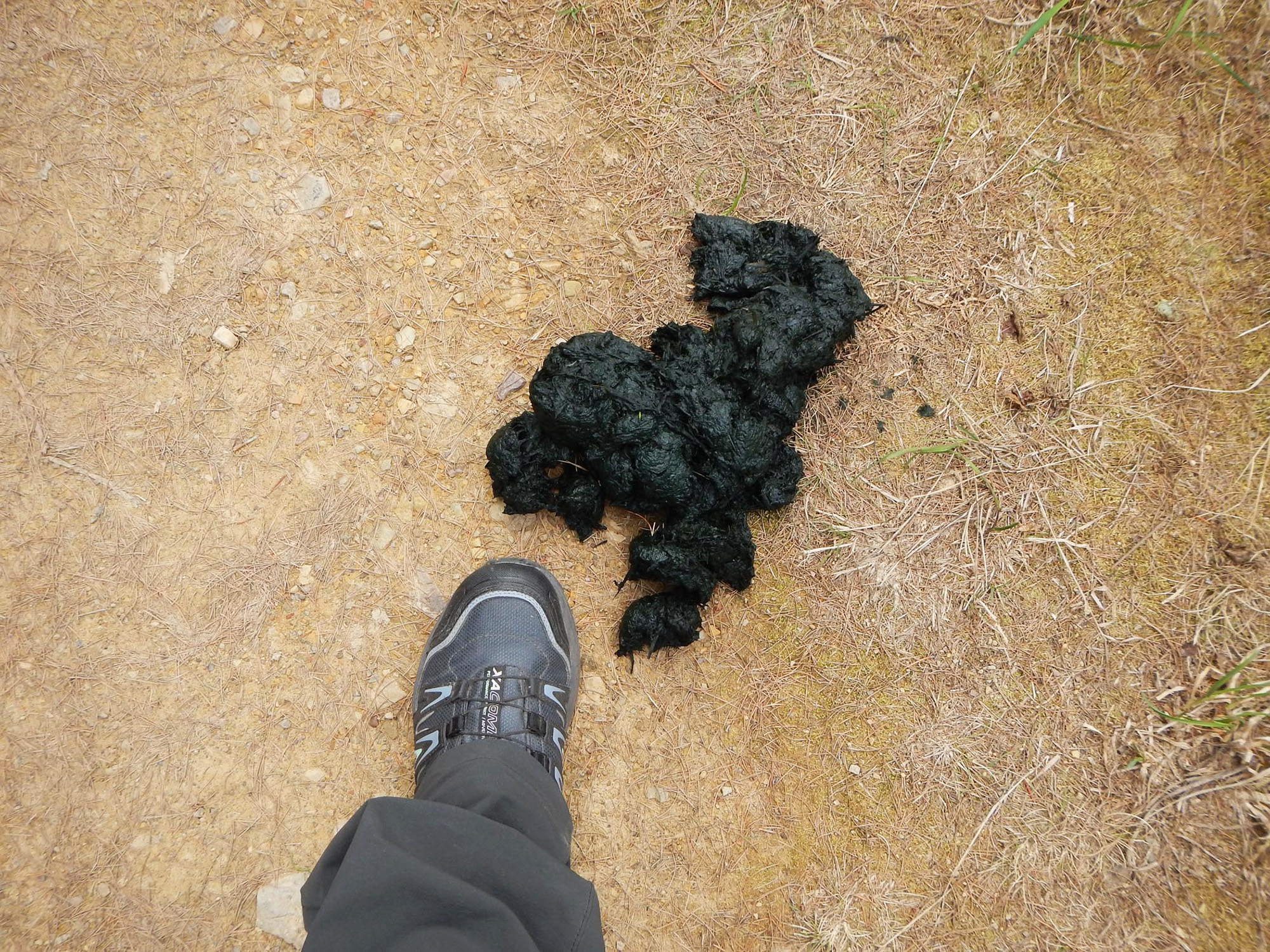
Bears eat nettles, fireweed, dandelions, and a variety of other weeds and grasses. If you come across a black, sun-scorched scat that’s the consistency of jerky, it’s probably a vegetation scat. If you’re really curious, Jonkel says, rehydrating it can help identify its contents.
Berry Scats
Similar to how vegetation scats are usually green, berry scats are often a dark purplish-red or brown color. But the best way to identify berry scats is by its seeds, Jonkel says.
Both black bears and grizzly bears eat huckleberries, chokecherries, snowberries, mountain ash berries, and hawthorn berries, among countless other varieties. But a bear’s digestive system usually struggles to break down the seeds, pits, skins, and sometimes even the berry flesh. That’s why lots of berry scats are full of whole fruit.
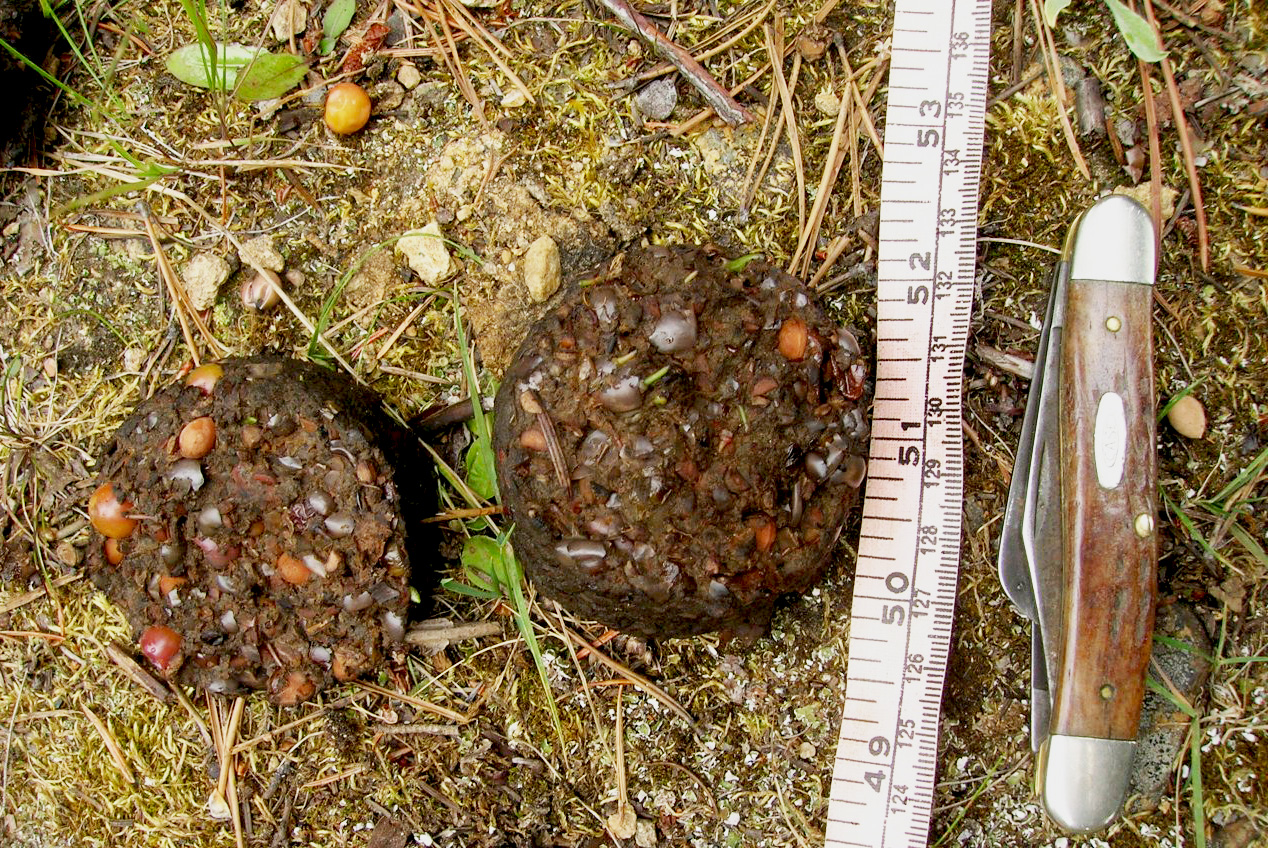
“Bears have a fairly short intestine, so they have to eat a lot to glean the sugar” from the berries, Jonkel says. “With the huckleberry scats, you could wash them out and make a pie, although I don’t recommend that.”
Insect Scats
Black bears and grizzlies both seek out bugs for food. They also ingest bugs incidentally while uprooting vegetation and foraging for berries. As a result, some bear scats look like they’re coated in a black, fragmented shell. That’s what Jonkel calls an ant scat.
“Ant scats almost sparkle, because they are full of the shells or armor on ants,” he says.
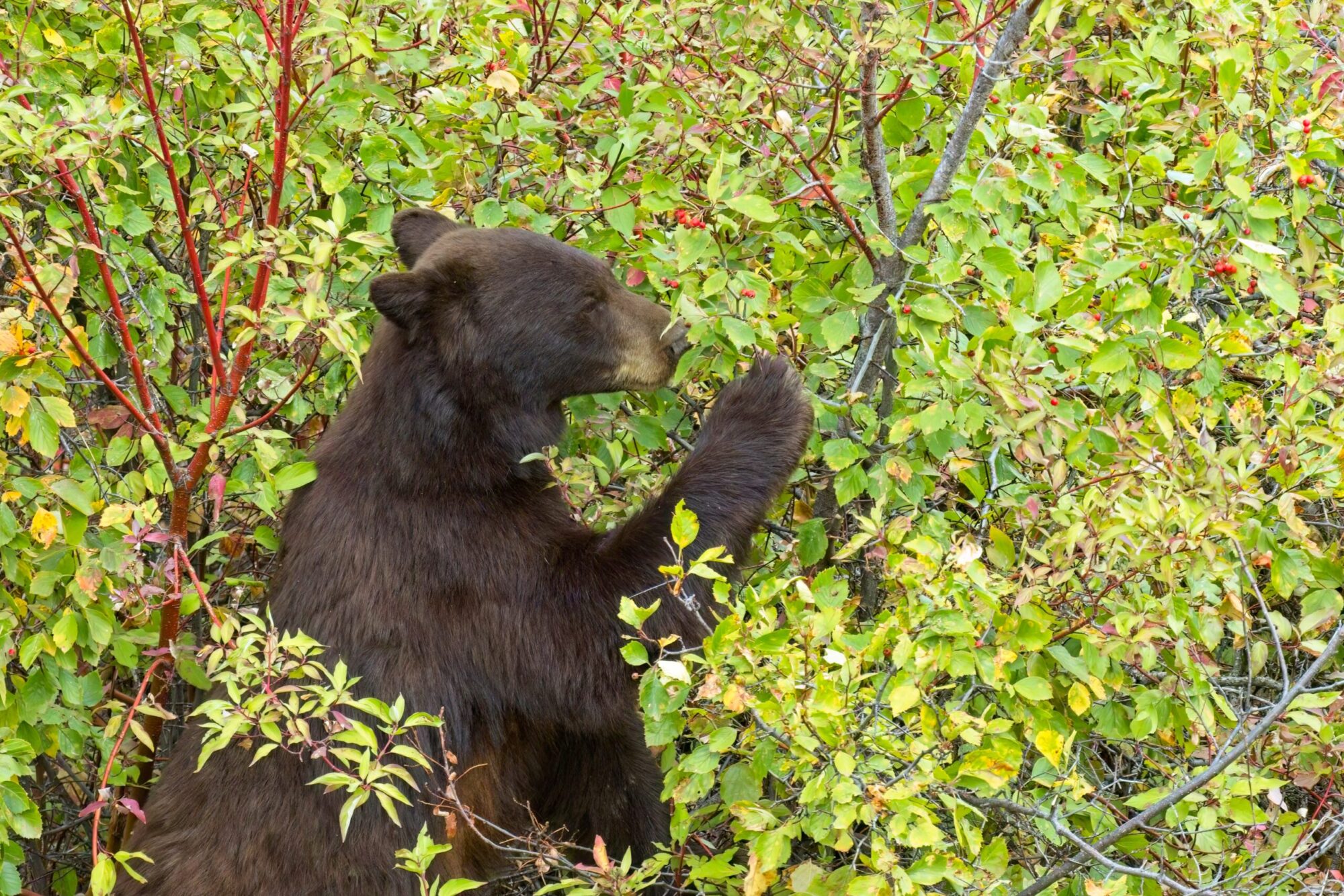
But a bear’s bug diet doesn’t end with ants.
“Army cutworm moths will come out more gray, but a lot of times you can still distinguish the wings. And they eat a lot of hornets or yellowjackets, and those are always shocking. It comes out just solid, well, hornets,” Jonkel says. “Depending on the body shape and the strength of the insect they’re eating, the scat will look different.”
Meat Scats
As voracious scavengers and apex predators, grizzlies and black bears will both end up with a lot of meat, cartilage, fur, and bone in their scat. All of those components of a carcass will pass straight through the bear’s digestive system and come out the other side.
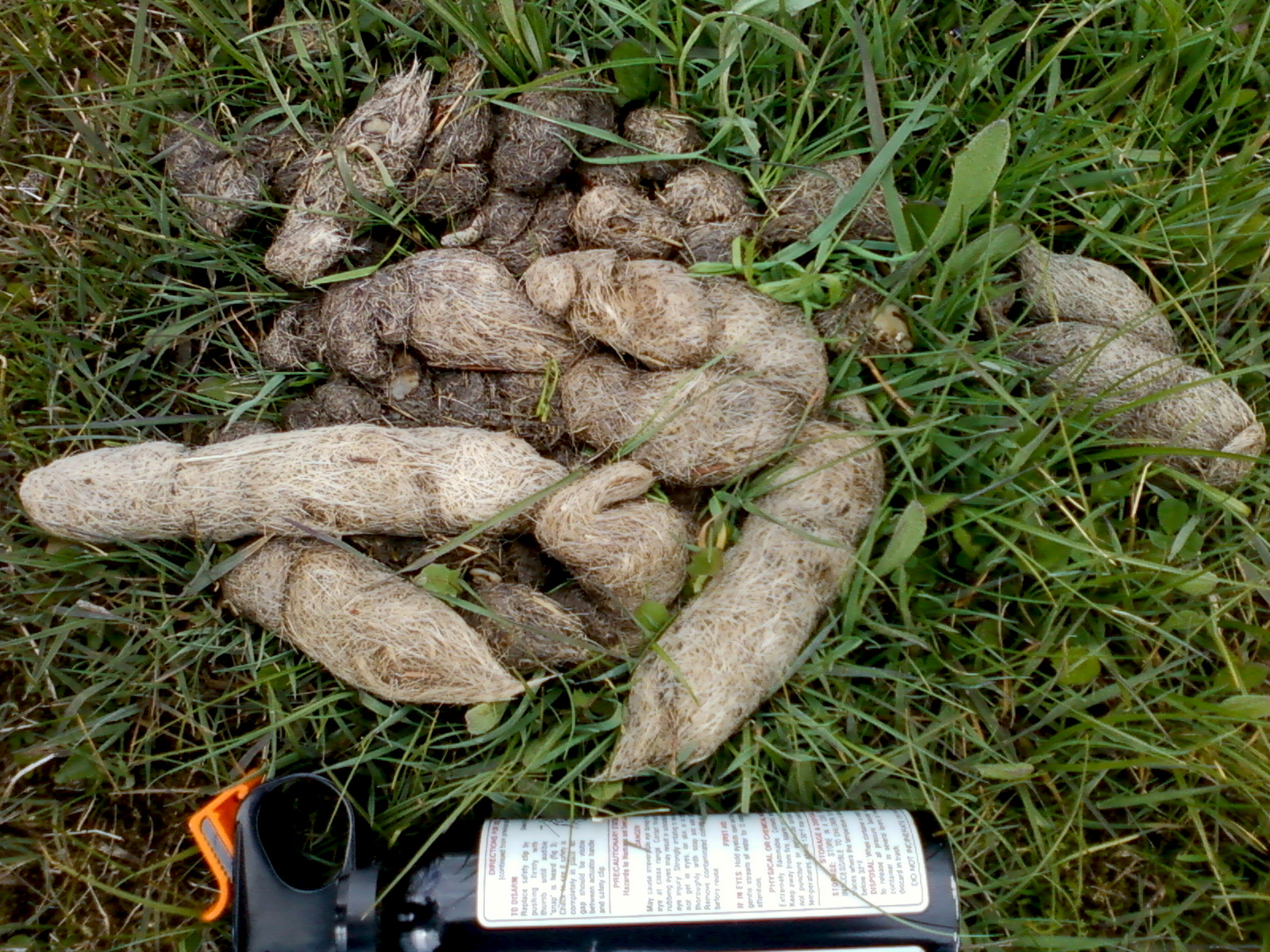
“When it first comes out, it’s kind of a wet, nasty-looking mess,” Jonkel says. “Then it slowly turns white over time. If it’s dried out, it’s all white, and a lot of the time you’ll see bones and a lot of hair. When they’re eating the hide off a winter-killed moose or something, they’re these huge scats filled with hair. It comes shunting out in a big, long, lump of hair. Those are quite distinctive.”
Of all types of bear scat, meat scats are the toughest to identify as bear scat because they’re hard to differentiate from other predators. A small bear might have a similar-sized meat scat to a large mountain lion or a wolf. But, as Jonkel says, size does matter. So if it’s bigger and more of a pile than a traditional predator scat (more on this in a minute), it’s probably a bear.
Fish Scats
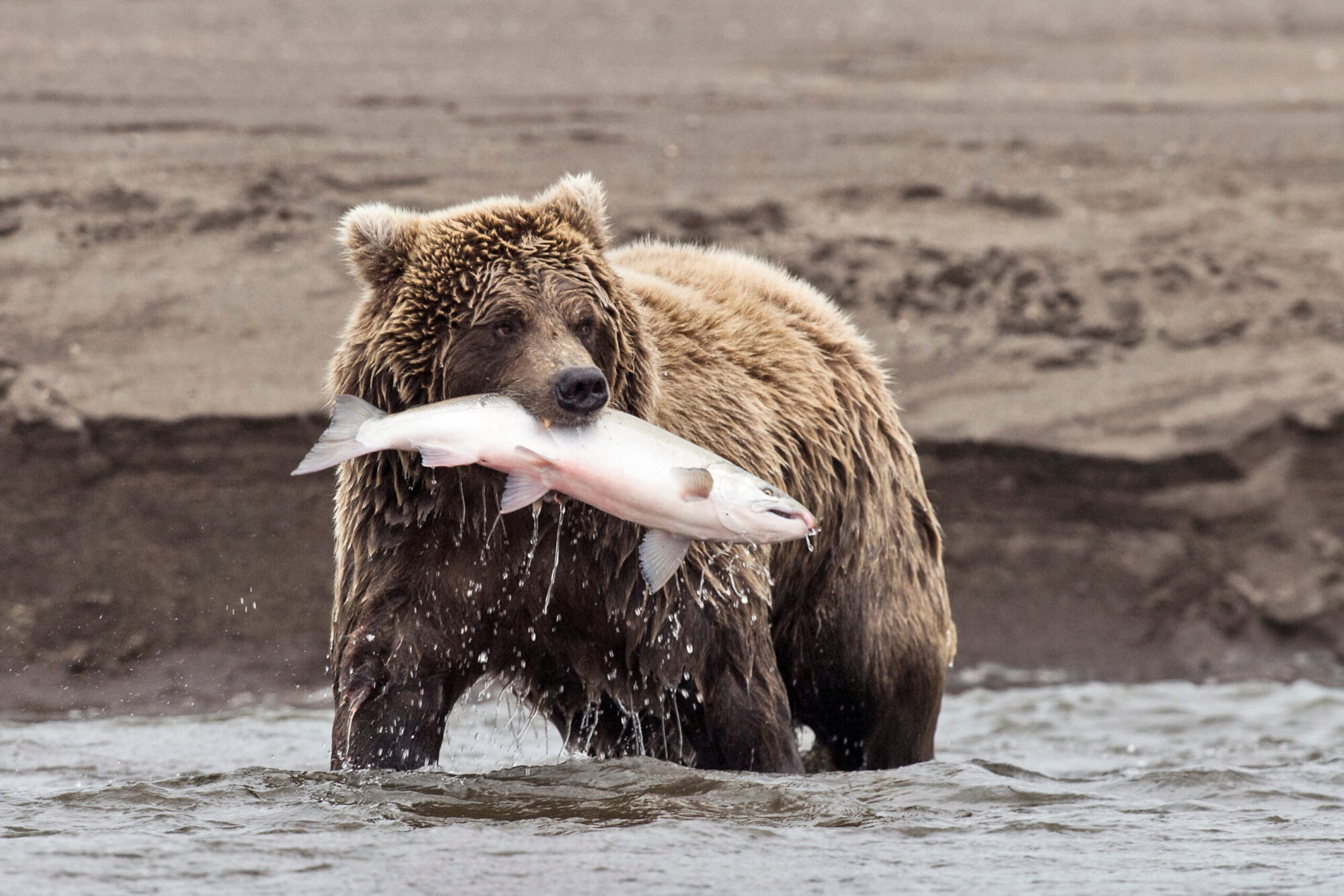
Fish scats are generally full of fish bones, scales, and skin. This kind of bear scat is largely limited to bear populations that live near water, unless a bear drags a fish carcass out of a dumpster. Inland bears eat lots of freshwater fish, while coastal bears eat saltwater fish, seaweed, razor clams, and the occasional dead sea mammal.
“One of the worst bear scats I’ve ever seen was from a bear that had been feeding on a dead whale,” Jonkel says. “That’s a big nasty pile of fat and froth.”
Garbage Scats
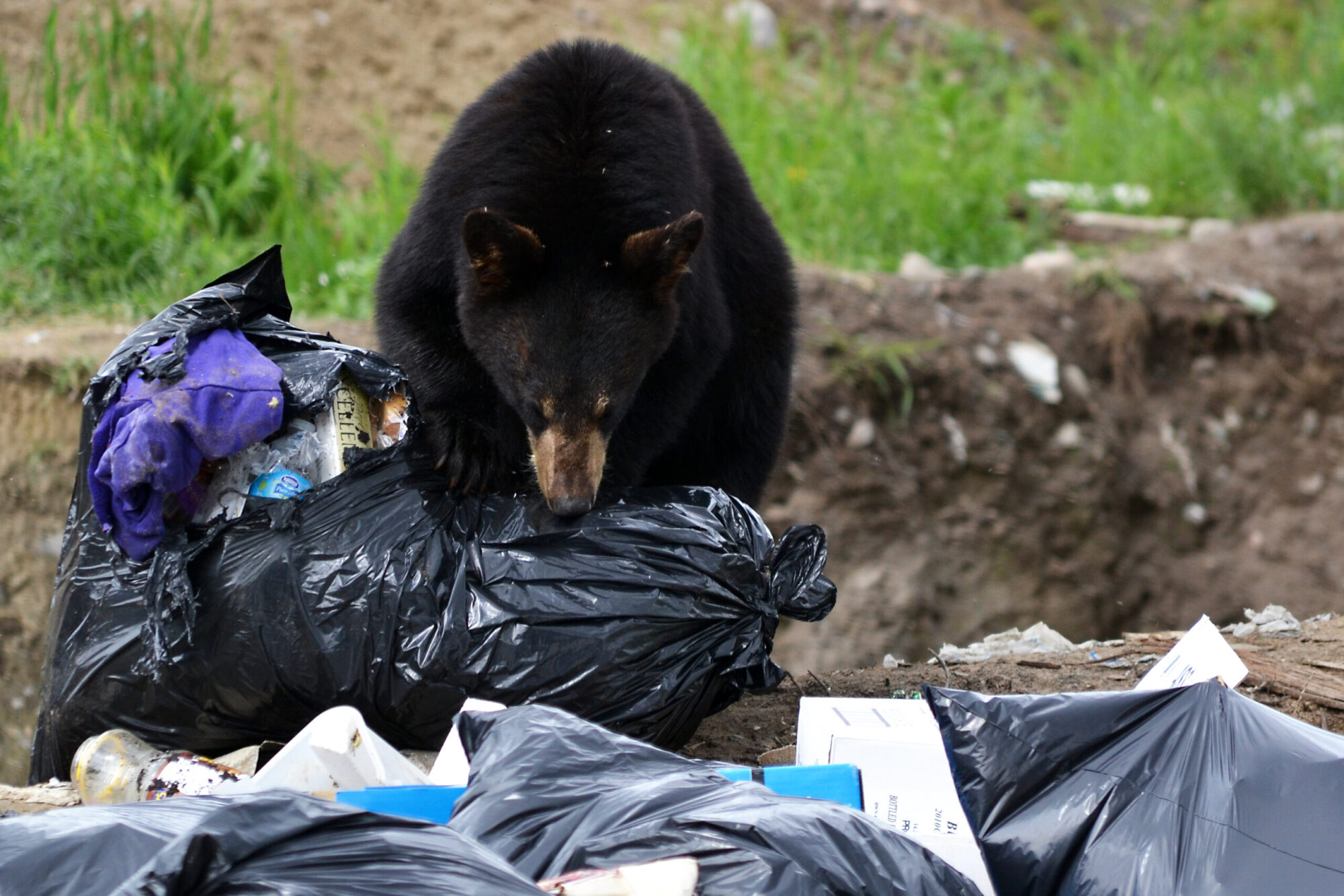
A bear’s inability to fully digest much of its forage also occurs with human-provided food sources. Piles of bear scat near dumpsters and livestock feed usually contain a spectrum of surprises.
“Sadly, when they’re in garbage, that’s an easy one. I’ve seen whole diapers and solid plastic. Or they’ll get into dog food, bird seed, horse grains, and a lot of times you can easily pick those out in a scat,” Jonkel says. “I talked to someone who found fingernail clippers in a scat. I found a Forest Service fire cache seal, a metal circle with wires [used to label fire-fighting supplies scattered in the backcountry]. It’s amazing what you’ll find in there.”
Grizzly Scat vs. Black Bear Scat
There is no reliable way to tell a black bear scat from a grizzly bear scat with the naked eye, Jonkel says. The size of the scat pile loosely indicates the size of the bear that left it. All things equal, mature grizzlies are bigger than mature black bears, but variations in age and sex make this a difficult rule of thumb. The only other way to determine which bear species is in the area is by finding nearby tracks. If the toes of a bear track creates a straight line and the claw prints are set forward from the toes, you’re looking at a grizzly bear track. If the toes are more rounded down on the outside edges of the paw and the claw prints are closer to the toes or nonexistent, it’s a black bear track.
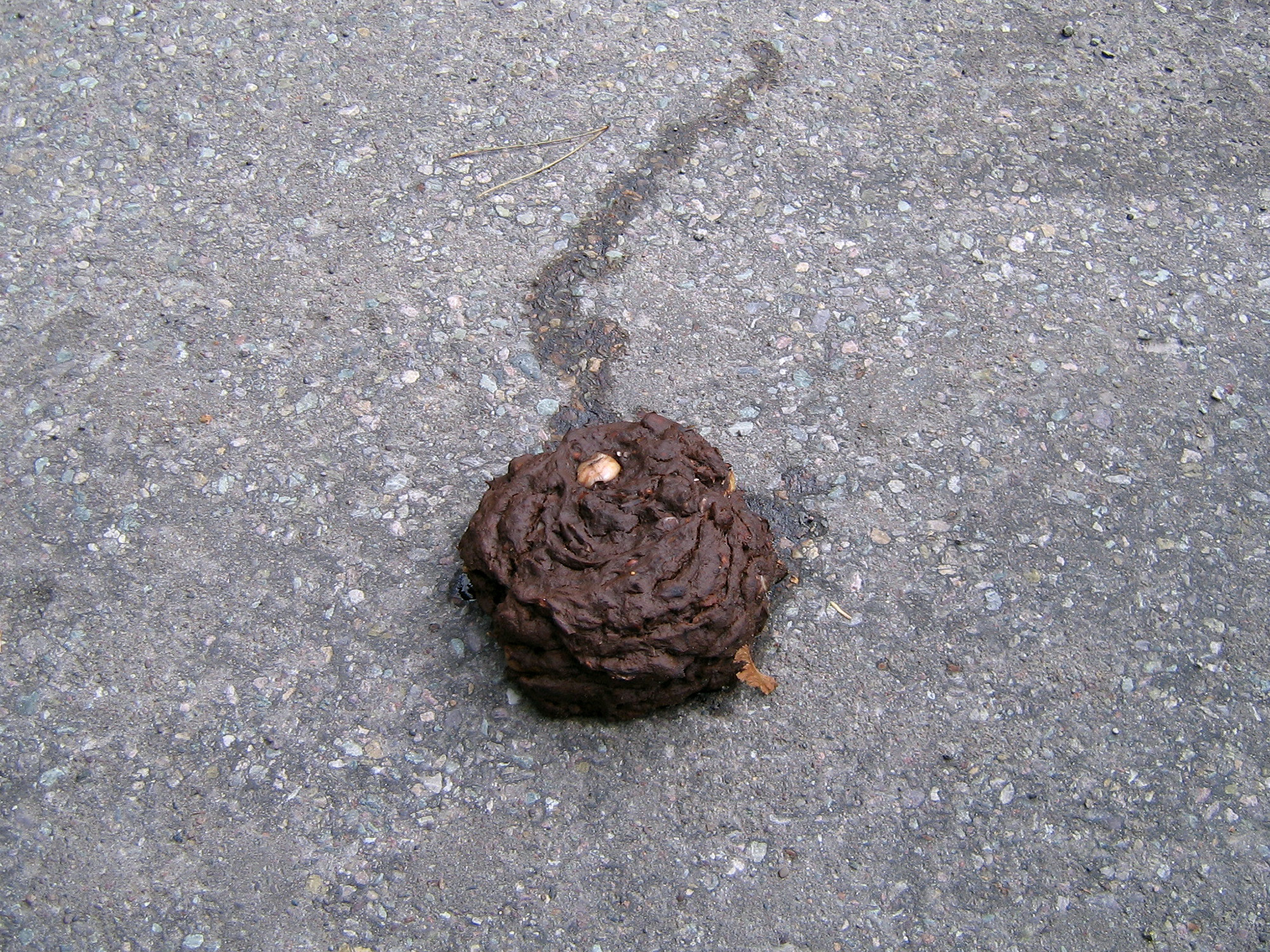
Biologists are currently developing a method for extracting DNA from scat, Jonkel says. It involves lifting the mucus cells that a bear’s digestive system leaves behind on the scat and studying them. Those cells carry DNA that can reveal piles of information about the bear, including which species it is.
Dogs might also become helpful in bear scat identification. Jonkel is currently working with Working Dogs for Conservation to train dogs to identify wildlife scats, specifically bear scats. It remains to be seen whether the dogs will be able to determine black bear scats from grizzly scats, Jonkel says, but it’s a work in progress.
How to Tell Bear Scats from Other Animal Scats
When it comes to proper scat identification, size absolutely matters. The dimensions of the pile will be the best indicator of what animal you’re dealing with, Jonkel says. If the pile is comparable to the size of your bootprint, you’re talking about one big critter. But bear scats can vary in size, too.
“Little cubs have little poops, medium-sized bears have medium poops, and big bears have big poops,” Jonkel says.
If the size of the pile indicates that the animal could either be a mature deer or a young bear, look for a lack of uniformity in shape. Deer, elk, pronghorn, moose, and horses poop in what are often identical pellets and balls. Bear scat, on the other hand, is much less uniform. Carnivorous mountain lions and wolves will have more cat- and dog-looking scats, respectively. These are more log-shaped and both will be chock-full of hair. As with a bear’s meat scats, mountain lion scats and wolf scats will turn whiter with age as they dry out. But a pile of bear scat is generally messier and sloppier than a single mountain lion or wolf scat.
Bear Scat Identification FAQs
Is there any way to tell grizzly bear scat from black bear scat?
No, not based on the scat alone, and not with a naked eye. Look for nearby tracks, which will give a better indication of what bear species is hanging around. Someday, DNA analysis and dogs might be able to help with bear scat identification, but it’s unlikely that humans will ever have that ability. You can, however, look at other sign nearby for clues, including bear tracks.
How can you tell how fresh bear scat is?
If the pile is wet and giving off heat, it is likely a few minutes to an hour old. If scat is just wet but not steaming or giving off heat, it might have rained recently, so see if the moisture content of the scat is consistent with that of the ground around it. Conversely, scats that are dry, light in color, or the consistency of jerky have been around for a long time. In fact, says Jonkel, they might have survived a whole winter preserved in snow and ice.
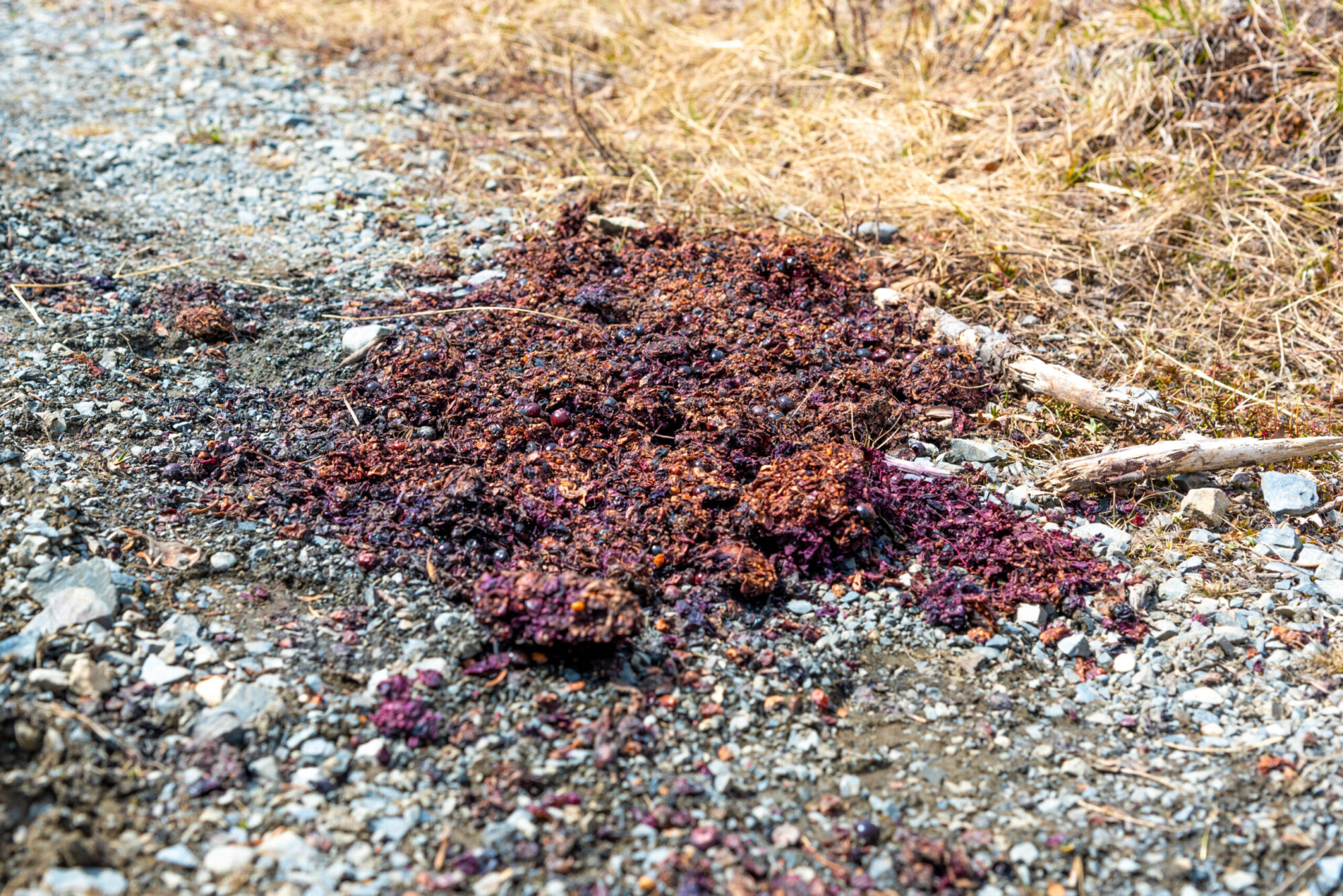
Does smelling or crumbling scat help with identifying it?
Bringing your face and nose close to a pile of wildlife feces is not a good idea, and neither is crumbling it with your bare fingers unless you can disinfect them before preparing food or collecting water. While Jonkel is a proponent of investigating scat, bears (and lots of other animals) carry parasites in their digestive systems that could easily transfer to humans if we come in close contact with it. However if you’ve got a bottle of hand sanitizer or a stick handy, dig in. You will find some combination of a treasure trove of pits, seeds, vegetation, and maybe some bones and fur. Just hope there’s not trash in it.
Do bears always poop in the same place?
Bears don’t always poop in the same place, but sometimes they will. Naturally, bears will defecate near their food sources, especially if those food sources are recurring. For example, a bear will likely leave multiple piles of scat near one moose carcass if it feeds on the carcass for a few meals. Jonkel recalls a time when he and a friend thought they spotted a bear den through binoculars, only to approach it the next day and discover what they thought was a hole was actually a giant pile of multiple bear scat.
Read Next: An Expert’s Guide on How to Stay Alive in Grizzly Bear Country
“I call these poop castles,” he says. “Just like how we like to use the old outhouse, and you have to check before you sit down to make sure the ‘cone’ isn’t too high. You have to keep the shovel around to tip the pyramid over every now and then. Bears have a similar strategy when they’re using the same site. They’ll always hang out in the same spot, and you’ll find these poop castles. I’ve seen them two feet high.”
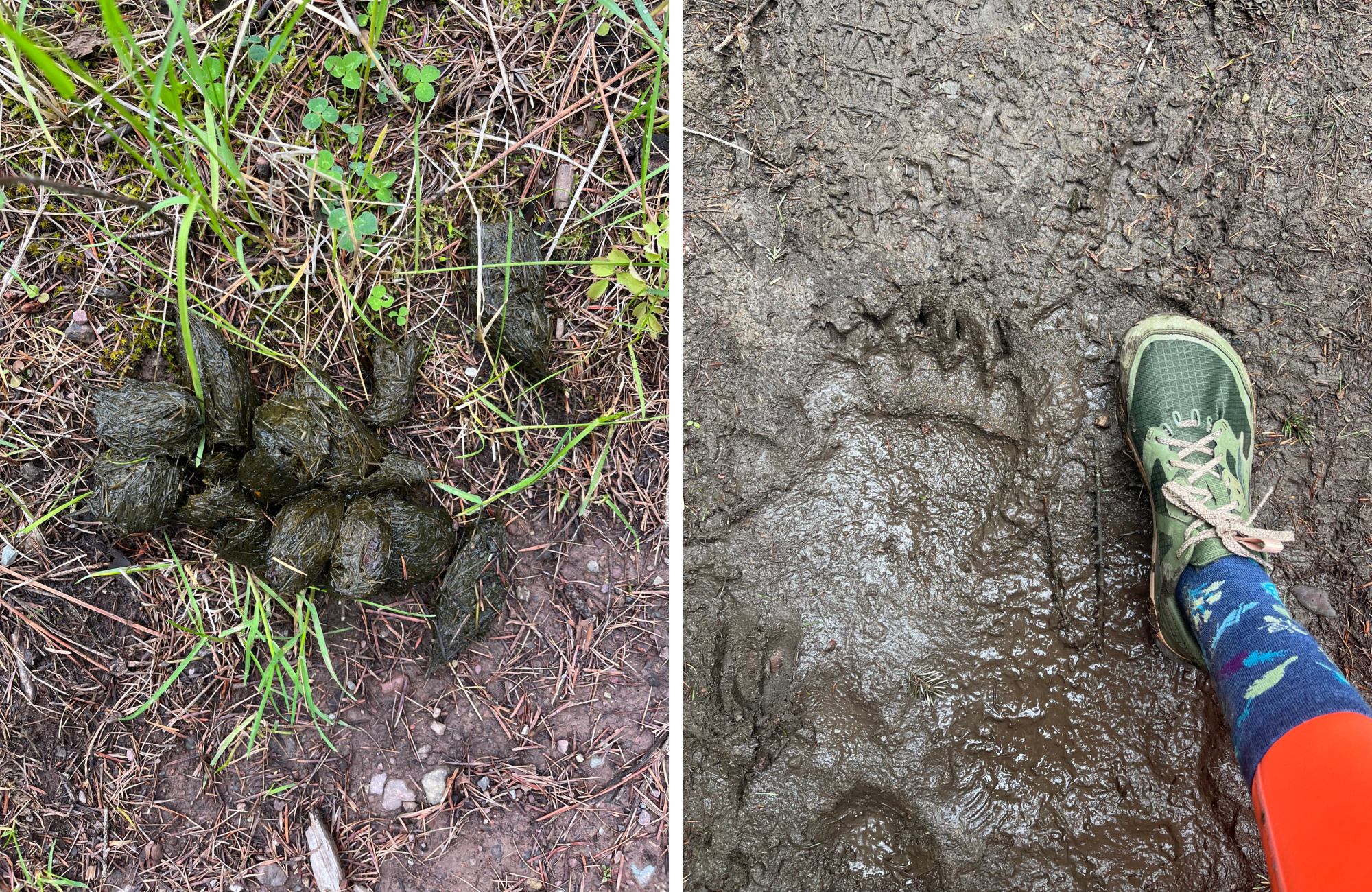
Why Bear Scat Identification Is Important
Being able to quickly identify bear scat helps hunters zero in on bears’ patterns, food sources, and travel areas. This is especially important for spot-and-stalk hunters who need to focus on areas with fresh bear sign. But it’s also important for general outdoors people to know what bear scat looks like. We should always practice good bear country protocol, but getting confirmation that there was a bear in the area recently is a solid reminder to stay locked in. —Alex Robinson
Read Next: Best Bear Canisters
Final Thoughts on Bear Scat Identification
If you come across a pile of scat, you can try to identify it as belonging to a bear based on a few features. Consider its size, location, and its contents. You can expect to find undigested seeds, vegetation, bugs, hair, and even trash in bear scat. For further clues, look for other bear sign nearby.
The tracks in the mud didn’t make it any easier for Austin and I to identify the scat that we were looking at. Five claws dug deep into the mud above five toes on a relatively flat plane. The rest of the track was difficult to make out, so we weren’t sure if we were chasing a grizzly or a black bear. But one thing was for sure: it definitely wasn’t a horse with a digestive issue.

